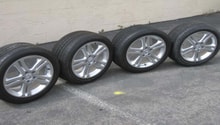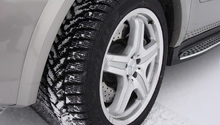Mercedes-Benz C-Class: Tires and Wheels General Information and Specs
There are tons of tire and wheel combinations to choose from. When it comes to finding the right ones for your Mercedes-Benz C-Class, where do you even start? Here's some information that might help.
This article applies to the Mercedes-Benz C-Class w204/w205 (2007-Present).
A lot goes into what tires and wheels you should get for your Mercedes-Benz C-Class. For example, what type of weather do you drive in? Are you using your w204 or w205 for daily driving? What tire and wheel combination complements your car the best? These questions, in addition to overall safety and handling, should be considered before purchasing new tires. This article provides some vital information for you to better understand what will give your C-Class a smoother or more aggressive ride, even in the poorest weather conditions. It is suggested you do some extra research on the specific tires and wheels you want, but that's all part of the fun.
Tires
There are three basic types of tires on the market. Summer tires, which are designed for highway and performance driving. All-season tires, which are for year-round use. And winter tires tires, which are designed for driving in the snow, slush, or rain. Most Mercedes-Benz cars come standard with all-season tires. Some performance models can handle larger wheels. These suit tires with a wider tread and lower aspect ratio—a combination that leads to increased handling and cornering capability.
You can find specific tire information in your car's driver's side door, or in the owner's manual. Most placards tell you sizes for the front and rear sizes, along with the recommended pressure for standard tire sizes. In some cases, the placards also have ranges to let you know what is (and isn't) likely to fit on your car.

How to Read Tire Sizes
Here's a typical tire size label that can be seen on your tire's sidewall (refer to Figure2): 215/55R16-97V
- The number 215 means the tire is 215 millimeters across (from the widest point on the inner sidewall to the widest point on the outer sidewall of the tire).
- The number 55 means the tire's sidewall height is 55% of its section width. The higher the number, the taller the sidewall.
- The letter "R" means this is a radial tire, referring to the tire's internal construction.
- The number 16 indicates the rim diameter in inches, so this tire has a 16-inch diameter inside.
- If there are two numbers and a letter after the aforementioned numbers (i.e., 97V), these numbers indicate the tire's "service description," its load index, and speed rating. These indicate the amount of weight the tire is rated to carry, and the speed for which it is rated.
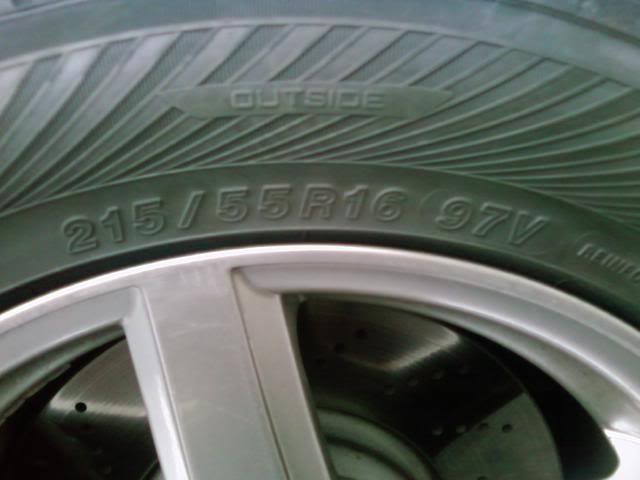
Wheels
Wheels are a great way to personalize your car. There is a wide selection available, from OEM to custom wheels. OEM wheels often offer easier fitment and greater availability, especially as used or take-offs found for sale in the forums. Aftermarket wheels allow for greater personalized size and color. When choosing wheels, you have to be aware of their diameter, width, and offset (backspacing) to assure good fitment. Additionally, wheels can be too narrow or too wide for your existing tires. So if you're upgrading, keep that in mind. Beyond size, weight and general performance are highly-regarded factors.
All alloy wheels are generally lighter than their steel counterparts. A lighter set of wheels can improve handling as well as performance because there is less weight for the engine to drag, and less weight impacting the road. Alloy wheels also conduct heat better, so the heat produced when braking dissipates quicker, which in turn can reduce the chance of brake failure under demanding driving situations. However, they can also corrode due to contact with road salt, chemicals, and moisture. As this "galvanic corrosion" can cause alloy wheels to leak air, avoid driving on heavily salted roads and keep your wheels dry. You can also apply a sealer to the wheels.
Wheels are available in a wide array of finishes. These include polished, chromed, riveted, buffed, and painted. Lastly, one more important thing to remember is that the painted finish of your wheels should always complement your car's body color.
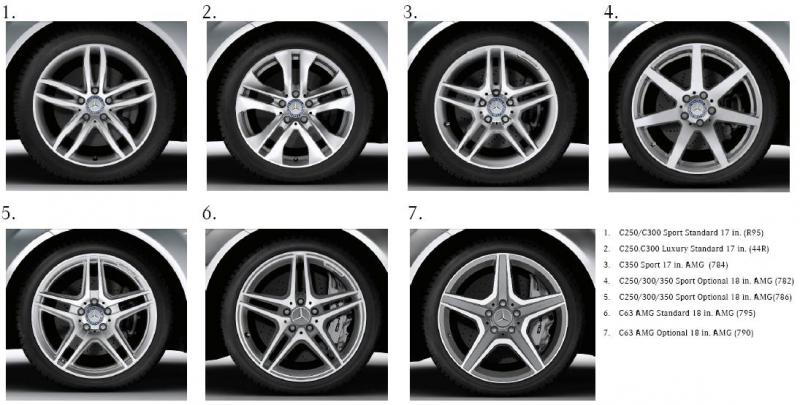
Scheduled Maintenance
If you still take your car to the dealership for service, it's pretty common that they will inspect your tires, among other things. However, you can assess your tire's health quite easily in between checkups with nothing but a penny. Stick a penny upside down in the tread voids. If Lincoln's full face is visible looking back at you, it's time to replace. This amount of wear is usually about 2/32", and a brand new tire usually measures about 10/32". All tires are sold with a tread wear indicator, which is a raised bar of material 2/32nd of an inch across the tire's tread. When the tire wears down to the indicator, it is no longer legal on the road and requires prompt replacement.
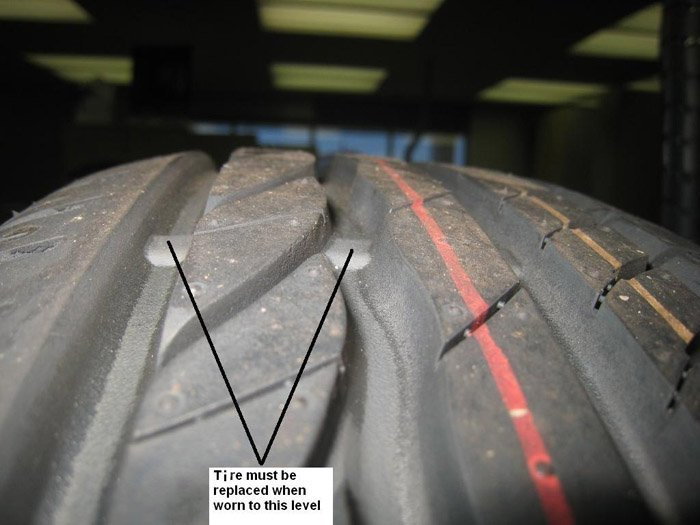
Common Questions
How Often Do I Rotate Tires?
Generally, every 3,000 miles for the first 15,000 miles and every 5,000 miles after that. Rotate more often if you encounter severe driving conditions.
Do I Need to Replace All Four Tires if One is Bad?
If you rotate your tires as instructed, one tire should never wear sooner than the others, unless you have front end problems like a bad ball joint or tie rod. Therefore, it's not really necessary to replace all tires if one of the tires is worn. However, it's often recommended to replace all four if just one tire is bad. Putting on a new tire with three worn ones creates a difference in tire size, which could negatively impact the vehicle's performance and safety. If it really comes down to it, replace the axle pair if your can't do all four at once. Tire rotations are cited in the owner's manual as to be performed every 5,000 miles (or every oil change).
One Tire Keeps Losing Air. Do I Replace It?
It may not be the tire. If you have alloy rims, they may be pitted or corroded. For around $50 per wheel, a service station will dismount the tire from the rim, grind the smooth areas that contact the tire, apply a sealant, and remount the tire. If the tire has a slow leak, which is highly likely from a screw or nail in the tire, a garage can plug it if the nail is on the main part of the tire. If you have a screw or nail in the sidewall, this is not legal to repair so you must replace the tire.
Common Issues
Car Pulls to Left or Right
A car that "pulls" to one or more sides often requires an alignment. For best results, bring the car in to a professional to have the alignment checked. In many cases, mechanics often balance the tires at the same time to help extend the life of the tires.
The Tops of My Tires Rub When Turning the Car
Tires rubbing on the wheel wells of your car are generally a bit too big for the vehicle. Depending on the size discrepancy, this may be more of a nuisance than an actual hazard. Tires that are too big for the car may alter the vehicle's handling and performance.
Related Discussions and Site
- Will These Wheels Fit My Mercedes-Benz E350 - MBWorld.org
- Ordered 19" Wheels Need Help with Tire's Size - MBWorld.org
- Replacing Rear Set of Tires - MBWorld.org
- Tire Tech Information - TireRack.com



